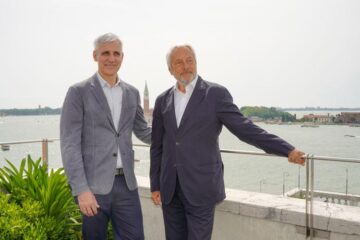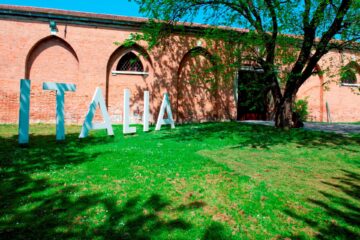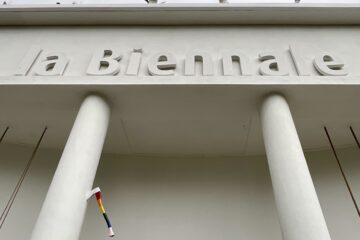ARTIST AND CURATOR SELECTED FOR THE JAPAN PAVILION AT THE 55TH INTERNATIONAL ART EXHIBITION OF THE VENICE BIENNALE


The Japan Foundation is proud to announce the artist and curator selected to represent Japan at the 55th International Art Exhibition of the Venice Biennale, opening on 11 June 2013. We will issue updates as the project develops. We hope your media organization will consider featuring the news.

Japan Pavilion at the 55th International Art Exhibition of the Venice Biennale
Artist: Koki Tanaka
Curator: Mika Kuraya
(Chief Curator of the Department of Fine Arts, The National Museum of Modern Art, Tokyo)
Organizer: The Japan Foundation
About the artist
Born in 1975; currently lives and works in Los Angeles. In his diverse art practice spanning video, photography, site-specific installation, and interventional projects, Koki Tanaka visualizes and reveals the multiple contexts latent in the most simple of everyday acts. In his recent projects he documents the behavior unconsciously exhibited by people confronting unusual situations, e.g. a haircut given by nine hair stylists or a piano played by five pianists simultaneously, in an attempt to show an alternative side to things that we usually overlook in everyday living.
He has shown widely in and outside Japan: the Mori Art Museum (Tokyo), the Palais de Tokyo (Paris), the Taipei Biennial 2006 (Taipei), the Gwangju Biennial 2008 (Gwangju), the Asia Society (New York), the Yokohama Triennale 2011(Yokohama), the Witte de With (Rotterdam) and the Yerba Buena Center for the Arts (San Francisco). He will participate in “Made in L.A.” at the Hammer Museum, Los Angeles in June 2012.
Artist website: http://www.kktnk.com/

About the Curator
Chief Curator of the Department of Fine Arts, The National Museum of Modern Art, Tokyo, Mika Kuraya earned her MA at Chiba University. Her recent curatorial projects include: “Waiting for Video: Works from the 1960s to Today” (2009, The National Museum of Modern Art, Tokyo; co-curated with Kenjin Miwa), “Lying, Standing and Leaning” (2009, MOMAT), “Meaningful Stain” (2010, MOMAT), “On the Road” (2011, MOMAT), “Undressing Paintings: Japanese Nudes 1880-1945” (2011-2012, MOMAT). Recent critical studies include: “Where is Reiko? Kishida Ryusei’s 1914-1918 Portraits” (Bulletin of the National Museum of Modern Art, Tokyo, No. 14, 2010).
Curator’s statement
Having experienced the Great East Japan Earthquake, a disaster on an unprecedented scale, what message should Japan be sending to the world? Regardless of what form the artwork in the Japan Pavilion at the 55th Venice Biennale takes, this is a question that cannot be avoided.
Under this year’s plan, we will address through the video works and installations of artist Koki Tanaka the theme, “How is it possible to take on the experiences of others as one’s own?”
Both the artist, Tanaka, and the curator, myself, have experienced the disaster partially through power cuts, damage caused by radiation, and so on. As for the awful experiences of people who lost close relatives, whose houses were destroyed, or who had to leave their sphere of life due to the nuclear accident, the only means we can find of accessing these are to harness our powers of imagination and to not forget.
Having said that, however, might it not be possible to explore the possibility of people who have experienced this disaster, regardless of the scale or depth of that experience, as well as people living in countries or regions far removed from the disaster – a category that probably includes most of the visitors to the Biennale – and even people of future generations separated from it by time (and perhaps not only this disaster, but the wars and other calamities that will no doubt occur in the future) sharing their experiences in some form or another?
This year’s plan was devised in the hope of turning the Pavilion into a platform for sharing these experiences. The outline is as follows.
(1) A number of exercises will be set up making reference either directly or indirectly to various aspects of the disaster.
(2) Groups made up of several people will be requested to tackle these exercises, with their cooperative efforts documented in ten or so video works.
Examples of exercises and groups:
• Descend the emergency stairs of a high-rise building together while making as little noise as possible (office workers).
• Discuss what you would be doing if you had not taken on your current occupation (people involved in the electricity industry).
• Reconstruct a single piece of china using the shards of several broken ones (conservators).
(3) The venue will consist of separate booths designed by a group of architecture professionals using only designated materials (blankets, sheets of aluminum, lumber) in which these videos will be presented.
Mika Kuraya (Chief Curator of the Department of Fine Arts, The National Museum of Modern Art, Tokyo)
Artist’s statement
For example, each of us has within ourselves a problem. This problem is our own particular problem, and rarely does it converge with the problems of others. Problems always bring with them pain, and this pain, too, is something we cannot share with others. Things like sympathy and empathy only strengthen the boundary between those who are experiencing pain and those who are not. The vector of sympathy always travels from those who are not experiencing pain towards those who are. It cannot travel in the opposite direction. This is why we should probably explore engagement not through sympathy but through some other means.
More than a year has passed since the earthquake and tsunami, yet many problems, including the disposal of the rubble, temporary housing, and the nuclear problem, continue. In the wake of the disaster, a large number of artists as well as architects, musicians, filmmakers and so on traveled to the affected areas to undertake volunteer work, initiating actions that reflected their own creative activities. These were not short-lived responses; rather, they are ongoing. At the Japan Pavilion at this year’s Venice Architecture Biennale, too, one such project will be unveiled. In the first few months after the disaster, the question on the lips of many Japanese artists was, “What can art do in response to this event?” And to this day, I think this question still lingers in the minds of many artists. While some have initiated direct actions, others have tried to respond indirectly by continuing to make art as they did before.
Well then, what exactly can I do? Actually, for me the question is rather one of thinking about what changes have occurred as a result of this event. One example is that there has arisen a social context marked by a strong willingness to share, a context that has likely not existed in Japan to date. When we look at Japanese society in terms of this context, even the most casual of actions have a completely different meaning depending on whether they occurred before or after that day. For example, on occasion we use stairs. Instead of an elevator or escalator, we use stairs. Until now we could have explained this by saying it was for our health or for the environment. But in today’s Japan, it would seem that the act of “simply ascending or descending stairs” can be interpreted differently. By this I mean it might reflect an attitude of not wanting to rely on electricity (in other words, nuclear power plants), although of course this may not necessarily be the intention of the individuals concerned. When I saw large numbers of people descending the stairs at a railway station in Tokyo, it looked to me like a demonstration of some kind. Not initiating new action, but re-examining, educing, and reinterpreting the context of the actions we have undertaken to date. By doing this, it should be possible to broadly generalize particular problems in specific regions, making it impossible for anyone to ignore them.
Koki Tanaka
Address in Japan:
4-4-1 Yotsuya, Shinjuku-ku, Tokyo 160-0004 The Japan Foundation Europe, Middle East and Africa Section Arts and Culture Dept. Person in charge: (Ms.) Tae Mori, (Ms.) Yoko Oyamada Tel: 03-5369-6063 Fax: 03-5369-6038
Press Contact:
The Japan Foundation – (Att: Ms. Masako Taira) – venezia@jpf.go.jp

![Logomark_B[4]](http://www.1fmediaproject.net/new/wp-content/uploads/2012/05/Logomark_B4.jpg)




No Comment